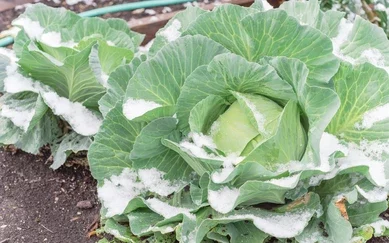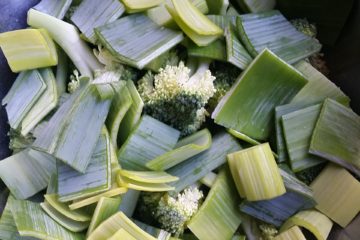Written by Connor Daugherty, Operations Intern
Few people immediately think of cabbage when they hear the word “vegetable,” but 71 million tons of this leafy green (or red) vegetable is produced each year, making cabbage the 4th most grown vegetable around the world. Thus, many cultures feature heavy use of the vegetable in side dishes and as a base component in many recipes. Owing to its late (or early) harvesting in cool weather, it has become a mainstay of winter or early spring cooking and has supported farmers through rough harvest seasons for millennia.
It has many varieties- Usually when one thinks of cabbage, one envisions the more common green and red cabbage varieties. While these are the most popular varieties, many other types of “cabbages” exist. To name some, there’s bok choy, Savoy cabbage, Napa cabbage, White cabbage, and Portuguese cabbage. The variety and differences between the same vegetable show how it was grown to match the culture, cuisine, and weather of the different climates it grew in.

Not Humble with Nutrition- Cabbage is low calorie and loaded with many important vitamins and nutrients. While the nutrition of cabbage varies, an average cup of cabbage clocks in under 20 calories, while also having 85% of the recommended daily intake (RDI) of vitamin K and 54% of the RDI of vitamin C. Beyond this, it also supplies other nutrients like calcium, folate, fiber and even a bit of protein. So, no matter which kind or color of cabbage you choose, you know you will get a lot of vitamins for not so many calories!
Benefits Beyond the Belly- While cabbage provides many nutritional benefits, it goes far beyond just vitamins and minerals. Studies have shown cabbage helps prevent and slow cancer while at the same time helping the survival rates of people on chemotherapy. Furthermore, it suppresses inflammation, supports heart and eye health, keeps bones strong and reduces high blood pressure. Almost every year new benefits are found from eating cabbage, adding to the numerous reasons to eat it!

Unique growing season- Cabbage is unique among many popular vegetables due to growing best in cool, somewhat dry conditions and being a very hardy plant. For example, it will be fine sitting under a blanket of snow, meaning it can be harvested deep into winter frosts. Furthermore, it grows rapidly, and the harvest of planted cabbages can begin 60-80 days after planting, meaning cabbage is the perfect vegetable to be planted right at the start of spring or right at the end of the fall. For California growers, cabbage grows well in the cool California winters and allows for harvesting before the spring planting season. Cabbage’s tolerance of cool weather is why it is so popular around the world. Many regions plant cabbage as a “fall back” vegetable as it is unlikely to be ruined by harsh weather conditions. Ken Fullett’s Quote, “Pray for miracles, but plant cabbages” shows how important this crop is and has been to many farmers around the world.
Variety is the Spice (or cabbage) of Life- Due to the huge number of varieties of cabbage, there are endless amounts of recipes that incorporate this hardy green. From coleslaw to kimchi, cooked cabbage is great for taking on the flavors that are added to it. Along with this, the varying colors and late growing season can keep your garden looking beautiful even as the trees lose their leaves. Growing up in a German household, cabbage was found in sauerkraut, krautsalat (coleslaw) and Rotkohl. While I still enjoy these dishes there are many other recipes from cultures around the world using this vegetable that I grew up eating. Some examples all can enjoy are Kimchi, Sauteed Cabbage , pancit, Napa cabbage salad, and Corned beef and cabbage.
References
“Cabbage: Health Benefits, Facts, Research.” Medical News Today, MediLexicon International, https://www.medicalnewstoday.com/articles/284823#nutrition.
“Cabbage Production.” Worldmapper, 6 Dec. 2019, https://worldmapper.org/maps/cabbage-production/.
Meenakshi Nagdevelast updated – May 25, et al. “12 Proven Health Benefits & Uses of Cabbage.” Organic Facts, 25 May 2021, https://www.organicfacts.net/health-benefits/vegetable/health-benefits-of-cabbage.html.
“14 Types of CABBAGE: Green, Red, White, SAVOY, Napa, and More Varieties.” Leafy Place, 1 June 2021, https://leafyplace.com/types-of-cabbage/.



0 Comments